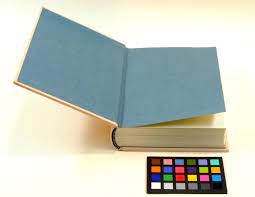
Traditional book binding keeps stories alive.
In an age of digital screens and disposable content, there’s something deeply meaningful about holding a well-crafted, physical book in your hands. Traditional book binding keeps stories alive by preserving the content, enriching the reading experience, and honoring the artistry of bookmaking. It’s more than just a way to assemble pages—it’s a cultural legacy that connects past, present, and future readers.

The Legacy of Traditional Book Binding
Bookbinding is one of the oldest crafts in human history. From ancient scrolls to medieval manuscripts, the act of binding has long served as both a protective measure and a form of artistic expression. Traditional methods such as hand-sewing, case binding, and leather tooling not only add durability but also create timeless beauty.
These techniques have survived for centuries because they work. Books that were bound hundreds of years ago using natural materials and manual craftsmanship are still intact today—proof that traditional book binding keeps stories alive across generations.
Preserving Physical and Cultural Heritage
Books are vessels of knowledge, imagination, and identity. Traditional binding methods protect these stories from physical degradation, ensuring that future readers can access them as they were meant to be experienced. Handmade bindings, sewn spines, and reinforced covers all contribute to preserving the book’s form and content.
More importantly, traditional bookbinding honors the cultural value of books. It respects the story not just as text but as a tangible artifact. Whether it’s a family heirloom, a historical document, or a first-edition novel, traditional binding transforms books into lasting treasures. This is how traditional book binding keeps stories alive in both material and emotional ways.
The Craftsmanship Behind Traditional Binding
Unlike mass-produced books, traditionally bound books are often made by hand. Each stitch, fold, and press is done with care and precision. Artisans select quality materials—cotton thread, acid-free paper, leather or cloth covers—to ensure the book will withstand time and use.
Techniques like Coptic stitching, kettle sewing, and case binding not only reinforce the book’s structure but also give it a unique aesthetic. Marbled endpapers, gilded edges, and raised bands on the spine turn books into works of art.
This attention to detail proves that traditional book binding keeps stories alive through skill, passion, and dedication to the craft.
Reader Experience: A Connection to the Story
There’s a sensory depth to a traditionally bound book that digital formats can’t replicate. The feel of cloth or leather, the sound of pages turning, the scent of old paper—these elements create a multisensory experience that draws readers into the story.
Readers often form emotional attachments to these books because of their physical presence. They’re not just reading; they’re interacting with a crafted object. The weight and construction of a traditionally bound book add gravity to the content inside, reminding readers that the story matters.
In this way, traditional book binding keeps stories alive not only by preserving the content but by deepening the reader’s engagement with it.
A Revival in a Digital World
While eBooks and audiobooks dominate today’s market, traditional bookbinding is experiencing a quiet revival. Collectors, small presses, and artists are returning to these old-world techniques to produce special editions, handmade journals, and restored classics.
This resurgence highlights a growing appreciation for sustainability, craftsmanship, and meaningful design. People are seeking out tactile experiences and items that hold lasting value. Traditional binding stands at the intersection of art, literature, and heritage—proof that, even in a digital age, traditional book binding keeps stories alive with renewed relevance.





